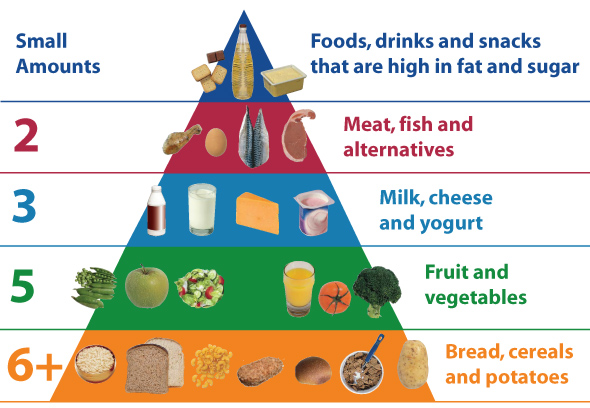Recommendations for infants
Among the recommendations made by professionals to the parents, include:
- Avoid a diversified diet too early (under 4 months), introducing solid foods, it can cause overweight in time;
- Introduce new foods gradually, preferably one to several days, during this time observing allergic reactions or digestive intolerance (hives, vomiting, diarrhea);
- Avoid feeding semisolid food by using a bottle;
- If the child does not seem to agree with new foods, parents are advised not to insist for the moment, and try placing them a little later.
Baby food hygiene
- The baby can be fed directly from a jar if its entire contents is used, otherwise, using a plate to prevent contamination is indicated;
- Containers for storing baby food should be tightly sealed and stored in the refrigerator no more than 2 days;
- Baby must be fed with his own spoon, adjusted to its size;
- When the baby sleep using a bottle, it is recommended not to contain milk, fruit juice or other sweet drinks, but just plain water. Parents should attempt to unlearn bottle use because it affects the normal development of teeth.
- Avoiding potentially asphyxiant foods.
Tips
- Water consumption is recommended between meals;
- Sweets or sweetened beverages are not recommended, since it can decrease appetite and will affect dentition;
- Excessive use of salt, sugar, spices and food additives for preparing baby food should be avoided;
- Caffeine-based products should be avoided (strong tea, chocolate, cocoa, coffee);
- There are cases in which babies are restless, because they need attention more than food, when parents are advised to spend more time in their company.
Diet for children
Children’s diet plays a decisive role in terms of health status, reflected by growth and harmonious development by age. The caloric needs of the child and adolescent body must constantly adjusted.
A balanced diet is based on all the food principles of the food pyramid; a child can have the same menu as an adult, but in his case, the amount of food consumed and the number of servings differ.
After age 2, doctors impose restrictions in terms of lipid content in the diet. A high calorie diet associated since this age, increase the risk of obesity, with all the metabolic disorders risks that it involves (including carbohydrate metabolism, peripheral insulin resistance and development of diabetes), cardiovascular and circulatory disorders.
If the child lives in an area with low fluoride water, the doctor should supplement this diet with trace elements, important in the normal development of the dentition. A more varied diet that meets all the principles of nutrition (cereals, vegetables, fruits, meat, dairy), has a role to prevent the pluricarential syndrome. Experts insist that all the nutrients that are essential to a harmonious development, to be given from food, and not administered as pharmaceutical supplementation. Although doctors do not recommend taking such supplements on a regular basis, for a perfectly healthy baby, nor does prohibit this to parents.
An unhealthy diet can expose children to serious mineral or multivitamin deficiency, most common being insufficient amounts needs of vitamin C, vitamin A, vitamin B6, folic acid, calcium and iron. Eating limited amounts of dairy products will cause an insufficient intake of calcium, which will directly affect the growth and bone mineralization.
The need for calcium during the growth of the organism is modified as follows: starting from 400 mg / day for five months, 600 mg / day to 12 months, 800 mg / day between 1-10 years of age, and 1200 mg / day for ages over 11 years. Foods rich in calcium include skimmed milk, yogurt and cheese.
Cheese is an important source of vitamin A, sodium, and, in small amounts, of vitamin B. Other products such as broccoli, cooked vegetables or salmon (with bones) are important in calcium content, but are hard to convince the kids to consume.
Regarding the iron body needs, it depends on age, sex, growth rate and development of mineral deposits background, and by absorption capacity of the digestive tract. Girls, during adolescence, will have higher iron needs due to menstrual losses. Sources of iron are; meat, fish, cereals, spinach, peas and dried beans.
Note!
The food pyramid was created by specialists in order to guide the individual toward a balanced and healthy diet. Using the recommendations included in the scheme can guide in choosing diets containing various products rich in nutrients, and in optimal concentrations, without destabilizing through surplus of food calories, fat (especially saturated fat and cholesterol), sugar and salt.
The foods are arranged in pyramid from the base to the top, depending on the amount to be taken daily, as follows:
– At the bottom of the pyramid are wholegrain cereals (whole wheat flour, oatmeal, brown rice) and refined grains (white bread, husked rice), which are products rich in fiber, iron and many B complex vitamins (thiamine, niacin, acid folic) – the recommended amount is 6-11 servings / day (one serving can consist of a slice of bread, a small bowl of cereal, 100 grams of cooked rice);
– Follows, the fruits and vegetables (2-5 recommended servings / day), their importance being given to the content in fiber, vitamin C, folate and potassium;
– Group of proteins containing; meat, fish, eggs, pulses – they provide an important contribution of iron and zinc, besides the high protein content – the recommended amount is 2-3 servings of each 70-100 grams / day, on the same level of importance are placed dairy products (milk, semi-or full-skimmed milk, cheese, yogurt), milk based desserts (ice cream, puddings), because they contains calcium, potassium, vitamin D – are recommended at least 3 servings / day (higher in children, adolescents and breastfeeding women);
– At the top of the pyramid are oils, fats and sweets: they represent the lowest proportion of foods from the diet and should be eaten occasionally, because they bring many calories at the expense of nutrients. In this category are included vegetable oils, margarine, cream, sugar, carbonated drinks and desserts.


